Wedding Tradition - Hindu

The Indian culture celebrates marriage as a sacrament (Sanskara), a rite enabling two individuals to start their journey in life together. In a Hindu wedding, the multiplicity of creation becomes possible when spirit (Purush) unites with matter (Prakritti). The Hindu wedding lays emphasis on three essential values: happiness, harmony, and growth.
All Hindu marriages are fixed according to an auspicious time in the future. Usually astrologists are called in to check the horoscopes of the prospective husband and wife. In a Hindu arranged marriage there are various rituals and customs Months before the wedding an engagement ceremony known as Mangni is held. This is to bless the couple, who are then given gifts of jewelry and clothing by their new family. Traditional Hindu wedding ceremonies can last for days and involve much ritual in Sanskrit that may be understood only by the priest conducting the service.
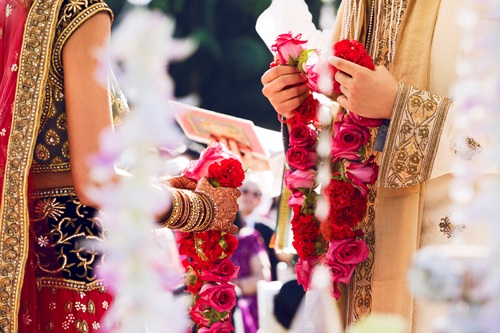
Jaimala (Exchange of Garlands) :
The couple exchanges garlands as a gesture of acceptance of one another and a pledge to respect one another as partners
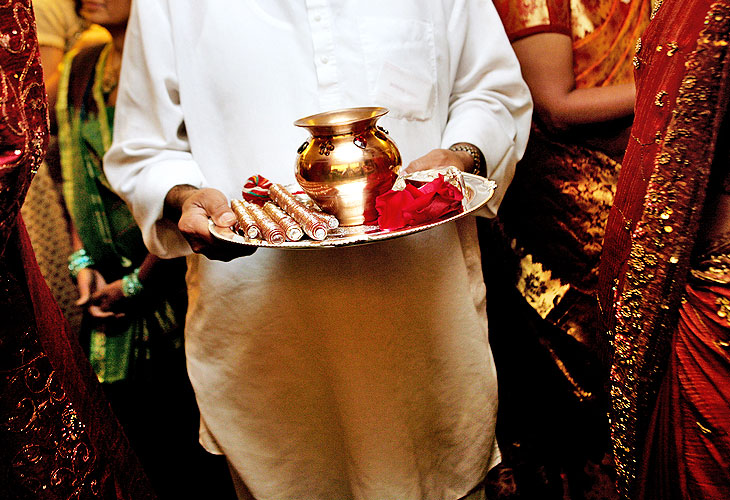
Madhupak (Offering of Yogurt and Honey) :
The bride's father offers the groom yogurt and honey as the expression of welcome and respect.
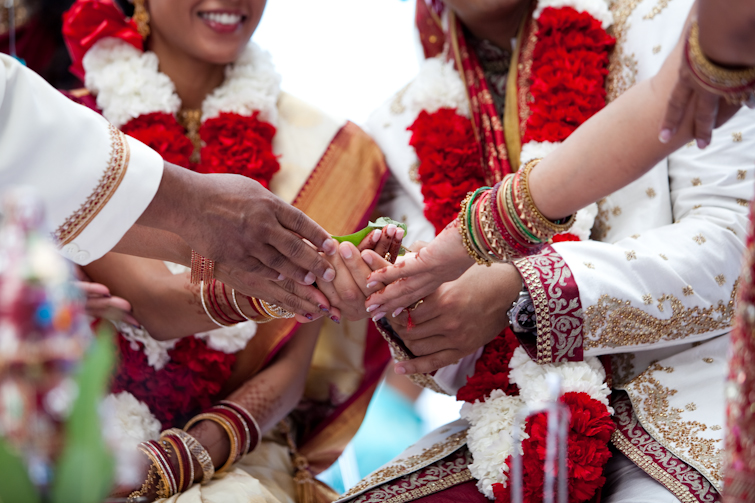
Kanyadan (Giving Away of the Bride) :
The bride's parents offer their daughter in marriage in a pious and solemn ritual called kanyadan. The concept behind Kanyadan is that the bride is a form of the goddess Laxmi and the groom is Lord Narayana. The parents are facilitating their union.

Hast Milap :
The parents of the bride join the couple’s hands as the couple declare that their hearts have been united, and they vow to remain entirely devoted to each other. The groom assures the bride that she will always be respected and honored in their home.
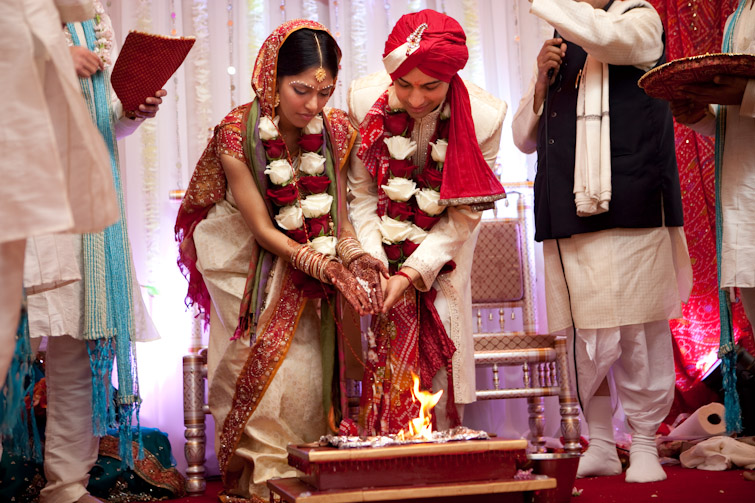
Rajaham (Sacrifice to the Sacred Fire) :
The bride places both her hands into the groom's and her brother then places rice into her hands. Together the bride and groom offer the rice as a sacrifice into the fire.
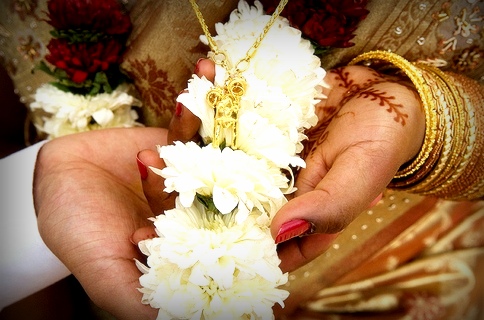
Mangalya Dharane (Tying a Mangalsutra from Groom) :
The bride places both her hands into the groom's and her brother then places rice into her hands. Together the bride and groom offer the rice as a sacrifice into the fire.
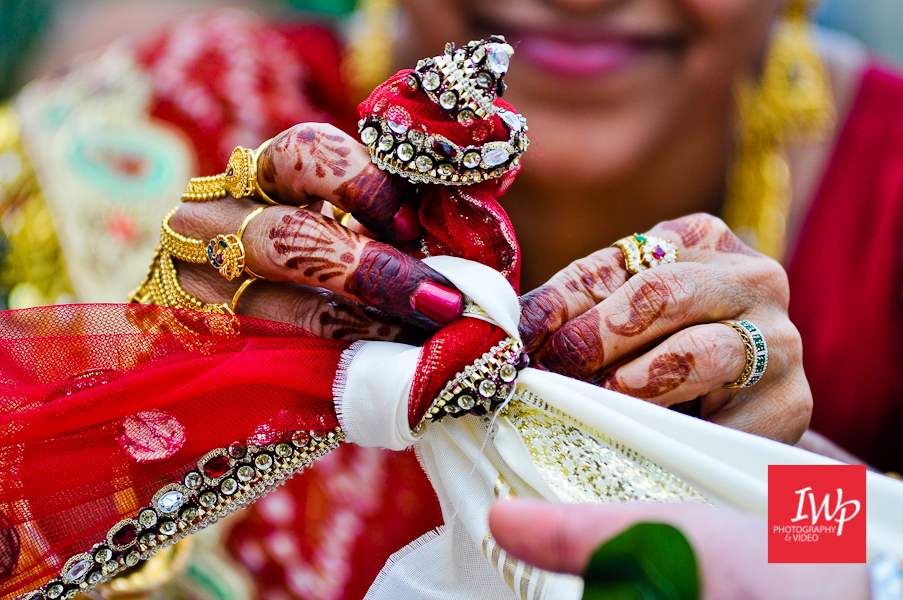
Gath Bandhan (Tying of the Nuptial Knot) :
The scarves placed around the bride and groom are tied together symbolizing their eternal bond. This signifies their pledge before God to love each other and remain faithful
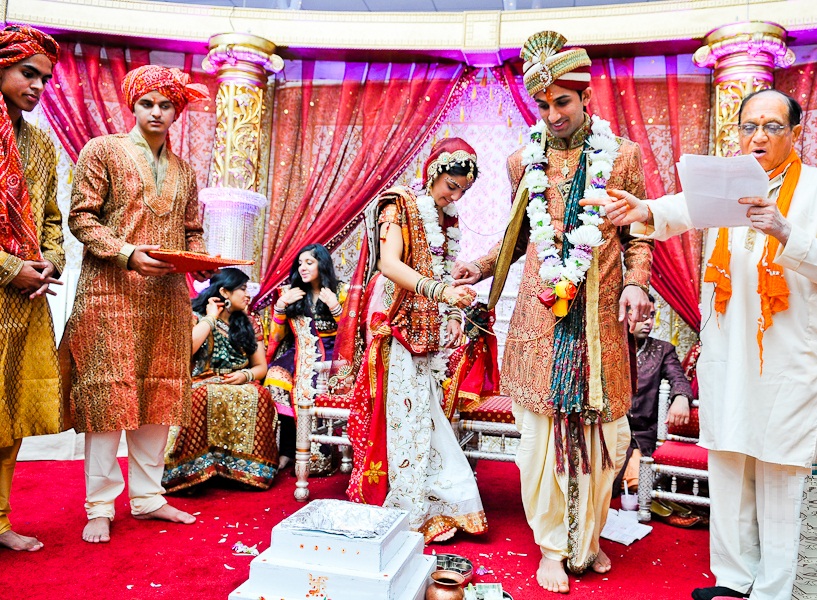
Mangalphera (Walk Around the Fire) :
The couple makes four Mangalpheras around the fire in a clockwise direction representing four goals in life: Dharma, religious and moral duties; Artha, prosperity; Kama, earthly pleasures; Moksha, spiritual salvation and liberation. The bride leads the Pheras first, signifying her determination to stand first beside her husband in all happiness and sorrow
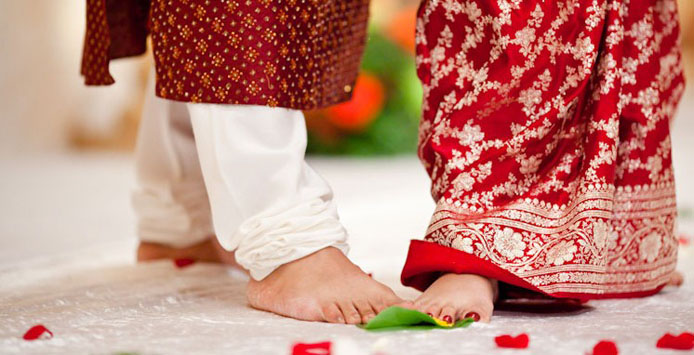
Saptapadi (Seven Steps Together) :
The bride and groom walk seven steps together to signify the beginning of their journey through life together. A pink cloth is draped over the bride’s shoulders and tied to the groom’s shoulder cloth. Then the couple walk seven steps together. Each step represents a marital vow:
First step: Let us take this first step vowing to keep a pure household; avoiding things injurious to our health.
Second step: Let us take this second step vowing to develop mental, physical, and spiritual powers.
Third step: Let us take this third step with the aim of increasing our wealth by righteous means.
Fourth step: Let us take this fourth step to acquire knowledge, happiness, and harmony by mutual love and trust.
Fifth step: Let us take this fifth step to pray for virtuous, intelligent, and courageous children.
Sixth step: Let us take this sixth step for longevity.
Seventh step: Let us take this seventh step to vow that we will always remain true companions and life-long partners.
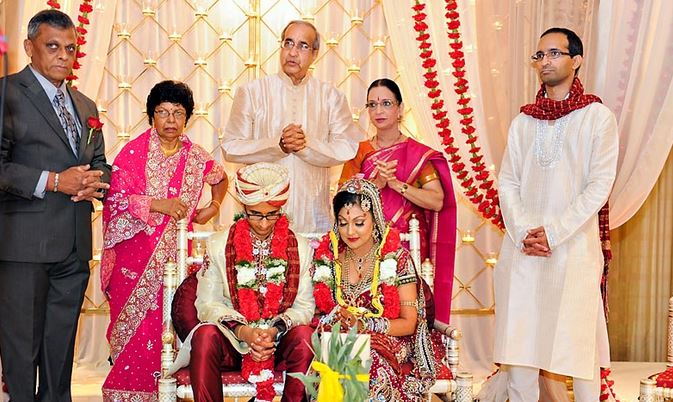
Jalastnchana (Blessing of the Couple) :
The parents of the bride and groom bless the wedded couple by dipping a rose in water and sprinkling it over the couple.
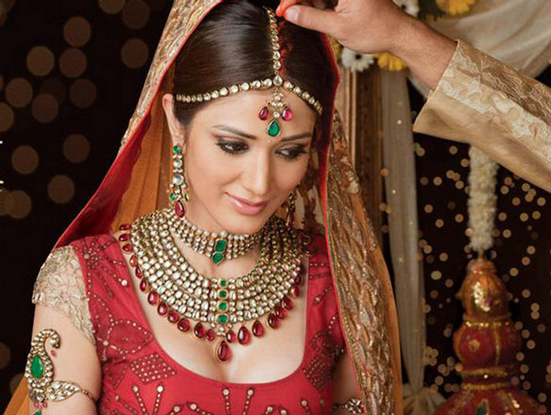
Sindhoor (Red Powder) :
Then the ritual of 'sindhoor' takes place where the groom applies a small dot of vermilion, a red powder to the bride's forehead and welcomes her as his partner for life. This signifies the completion of the marriage.
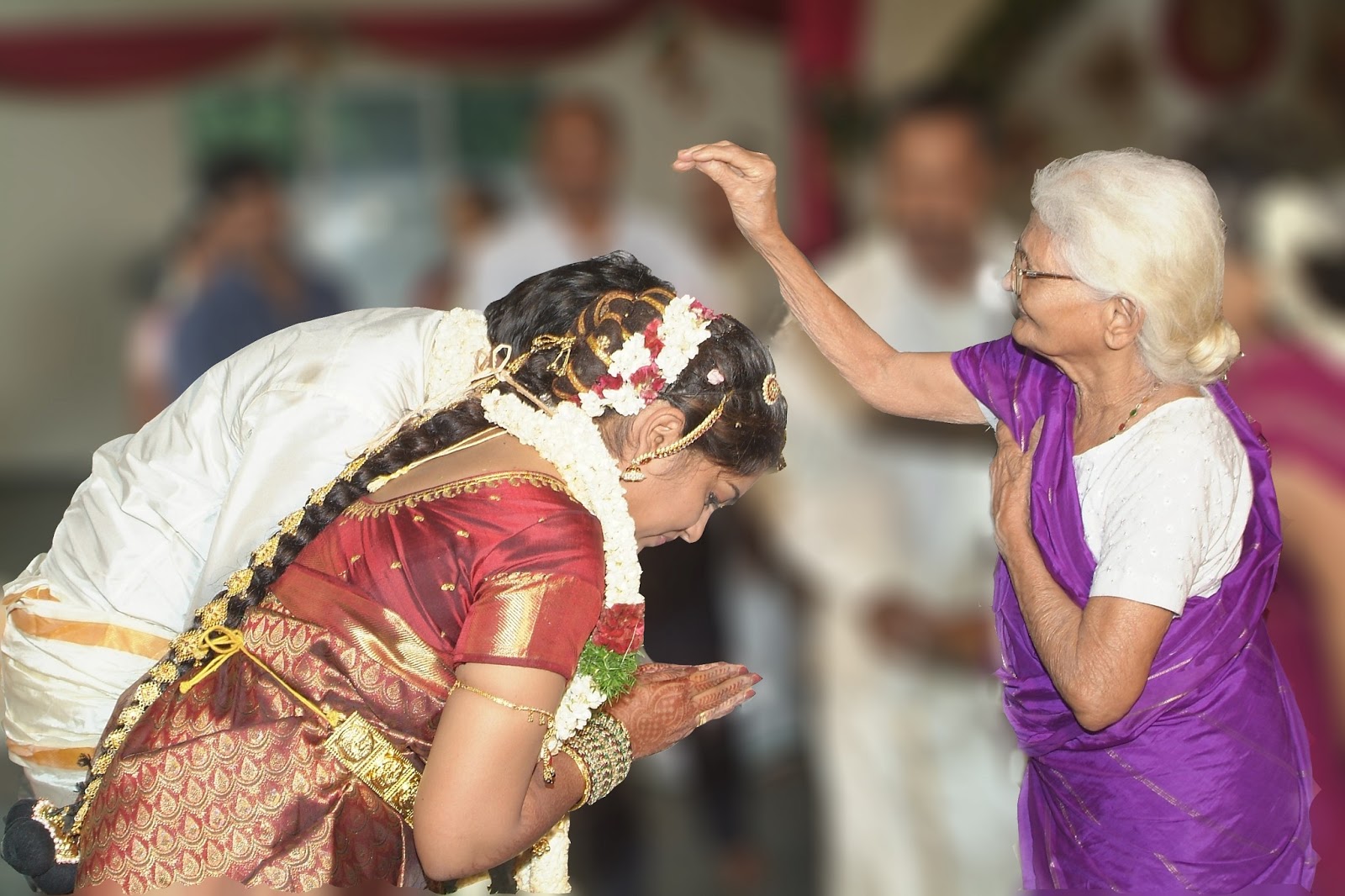
Aashirvad (Parental Blessing) :
The religious part of the ceremony is caped off by the blessings of the officiating priest. The relatives and friends join in to throw rice and flowers on the couple and express good wishes for the couple. The newlyweds seek Ashirvada, the blessing from the priest and parents by bowing down and touching their feet. The Bride and the Groom are now united and seek blessings from Lord Vishnu the Preserver and his consort Lakshmi, The Goddess of Wealth.
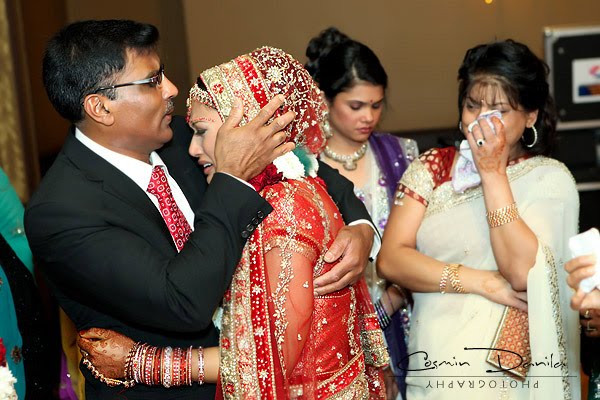
Vidaai (Good-bye) :
The last ritual of the ceremony is where the Bride begins an important role in her life as a wife and a member of the Groom's family. She throws a handful of rice so that the house of her childhood remains Prosperous and happy.
This ceremony is considerably shorter and is intended to be understandable even to a non-Indian audience, making it suitable for intercultural or mixed Hindu/non-Hindu marriages. The marriage among Hindus is not only considered a union of two souls but of two families. A Hindu wedding not only involves the bride and groom but the entire community, friends, family and relatives as everybody participates in their coming together. After all the rituals have been followed in the main day wedding function. There are still some more to be followed. And those are called the post day wedding rituals.
The guests who attend the wedding ceremony showers flower petals and rice on the bride and groom with blessings. Later on the guests give their individual blessings to the bride and groom. After the completion of the marriage ceremony they are invited for a delicious meal. Viddai ceremony is the farewell to the bride by her family and friends before she goes to her husbands place.
Pilucinchuanu is a ritual, which concludes the wedding ceremony here the priest places a coconut in front of the car and wait for it to be broken before the newly wedded couple heads for the temple to take the blessing.
You May Be Interested IN